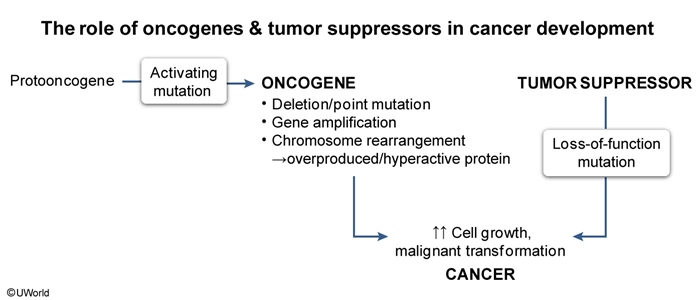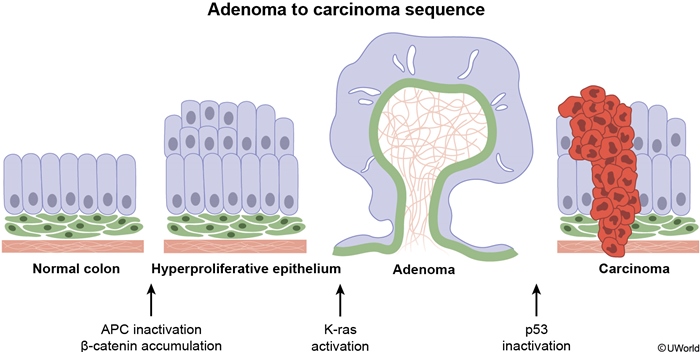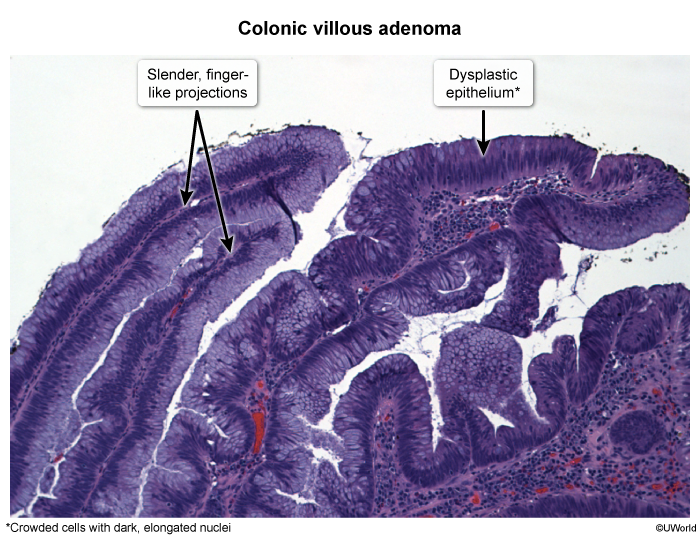Colorectal Cancer
Article Sections
Introduction
Colorectal cancer (CRC) comprises malignancies that arise from the epithelial cells lining the colon or rectum (which anatomically arises as a continuation of the sigmoid colon and extends to the anus proximal to the dentate line). CRC is a leading cause of cancer worldwide, with the highest prevalence in high-resource and industrialized nations.
Pathogenesis and pathology
The evolution of CRC reflects general mechanisms of cancer formation (Figure 1), which typically involve the following types of mutations (Table 1):
- Activating mutations (eg, gain-of-function mutation) in protooncogenes (eg, KRAS), which result in uncontrolled cell growth
- Inactivation (eg, loss-of-function) of tumor suppressor genes or antioncogenes (eg, APC, TP53) resulting in failure of mechanisms that promote apoptosis
In CRC, these mutations can be either sporadic or hereditary. Several pathways may contribute to CRC development.
Continue Learning with UWorld
Get the full Colorectal Cancer article plus rich visuals, real-world cases, and in-depth insights from medical experts, all available through the UWorld Medical Library.
Figures


Images

